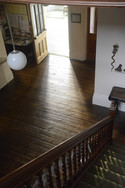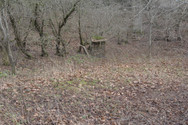MPP Research
- Dave Macey

- Dec 21, 2015
- 3 min read
Last night we had what has become affectionately known as Monk chat (there is a series on YouTube with the same name) and it's basically like a question and answer session where you can ask a resident Monk any question.
The discussion at night turned onto the way we perceive reality and how we use our minds, which then led to the use of our conditioned minds. This is where we use what we consider to be standard responses to the reality as we perceive it and in essence it means "thinking inside the box" and how to change that is to use the unconditioned mind as the unconditioned mind can be more creative and spontaneous.
Apparently the way to access the unconditioned mind is through the use of "being in the moment" or "being in the now". By doing this we are not accessing the history and the responses that our conditioned mind has created and so this makes it easier to be more spontaneous and creative because it is unconditioned.
But being able to access this unconditioned mind is not reliant on meditation, it's not a case of going into a meditative trance to gain the guidance of the unconditioned mind. From what I understand it's just a case of stopping the conditioned mind by being mindful of the present, of the now and not relying on a narrative that has come from the past. By "letting go" of this mindset the mind is then free to work unrestricted by previous behaviour or thought patterns, there is more space for the mind to perceive something that it normally wouldn't see and it has the space to be more creative.
So, as I've began searching for a new way of thinking to be more creative this could be useful. I can now understand how this could be possible. By using this technique, of being mindful of the moment, which is something that I can achieve, will hopefully enable me to "think outside the box". I have noticed before just how linear and logical my thought patterns are, that there is not very often the intuitive and instinctive jump forward but a slow definite plod in the right direction (I think I have just realised why I hate surprises so much!) So maybe I do need to take a jump outside the box and into the unknown.
So to test this theory I decided to take some photographs around the monastery in a deadpan aesthetic, to try and take the photographs without consciously thinking about how to compose the image and so by hopefully be able to “think outside the box” . I think the way to tackle the deadpan image is to photograph the scene as I see it and not try to manipulate it, to get as close as I can to photograph as “straight” as possible.
Of the photographs I took the 16 images above are probably the best, in my own judgement. I think they reflect a sense of stillness and quiet, which is what the monastery produces as it’s a place for quiet reflection and contemplation. I have tried to emphasise the deadpan aesthetic and I think some of them work better than others, such as DSC5871 and DSC5877. DSC5911 works well with the trees at the top of a steep bank and DSC5916 has a good juxtaposition between the green leaves and the bare branches. I also think that if they were taken on film instead of a DSLR then they would probably work better because of the organic aesthetic film has would compliment the images.
But I think the important element that I need to acknowledge is that I am trying to let the subject matter produce the connotation and not the composition. The connotation for the images are meant to reflect what the monastery is like and does not rely on the manipulation of the image by either composition or editing.
Another element that has come to mind is about trying to capture the texture of the place, such as photographing the trees not from close up but from a distance to capture the overall texture of the trees. I think before I was becoming a bit narrow in my view, I was seeing details instead of the scene and by stepping back and creating a distance between me and the subject helps to develop that impression of quiet inner reflection.
So I hope that what I have learnt about the way that I think and how to gain a more flexible approach will be useful when I go back to Little Stone Wood. I also hope that with trying to develop a deadpan aesthetic will help when it comes to photographing the woods.











































































































































































































































































Comments